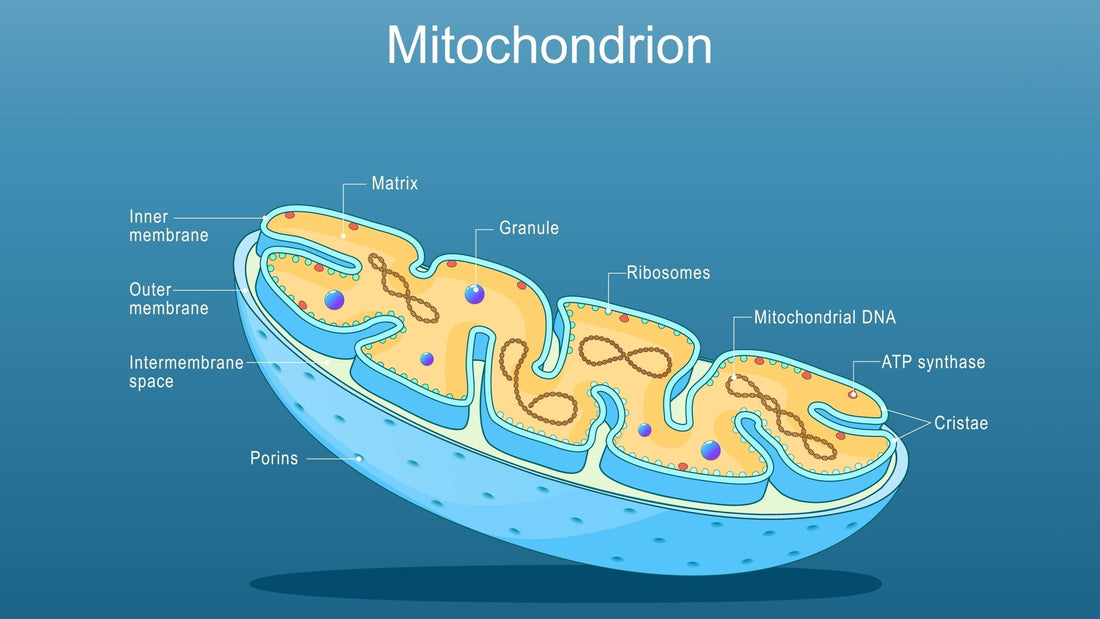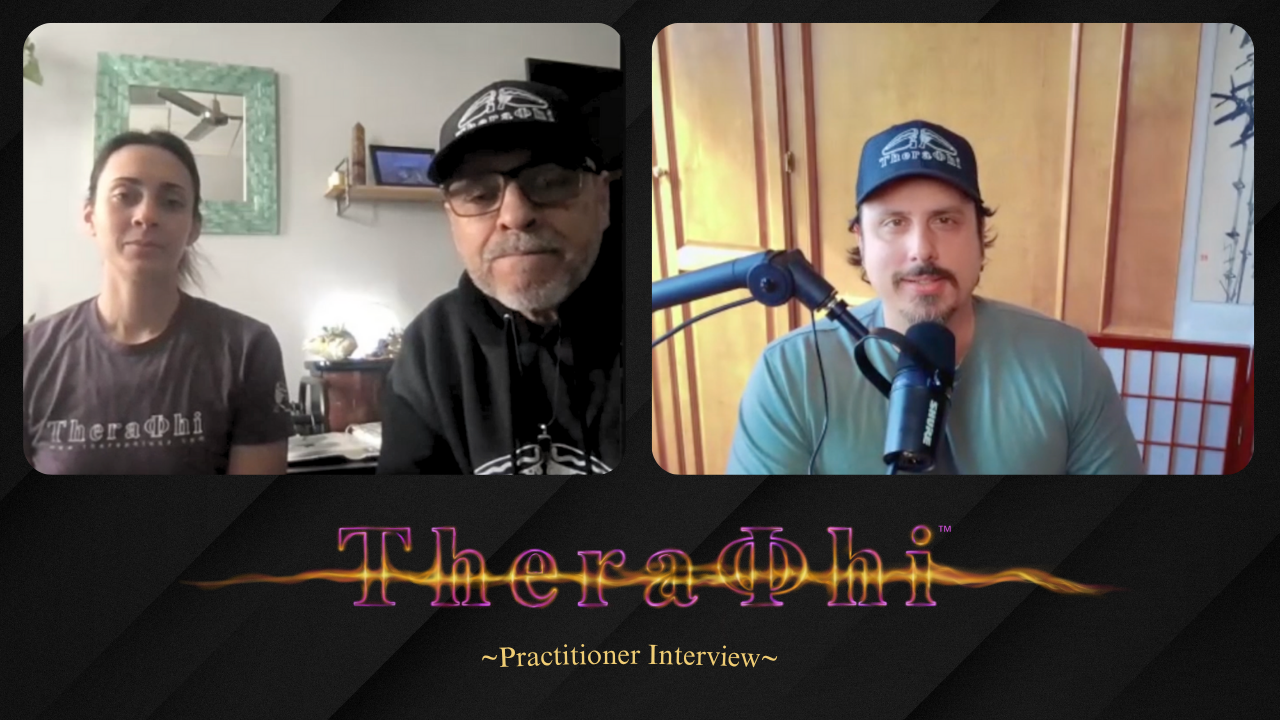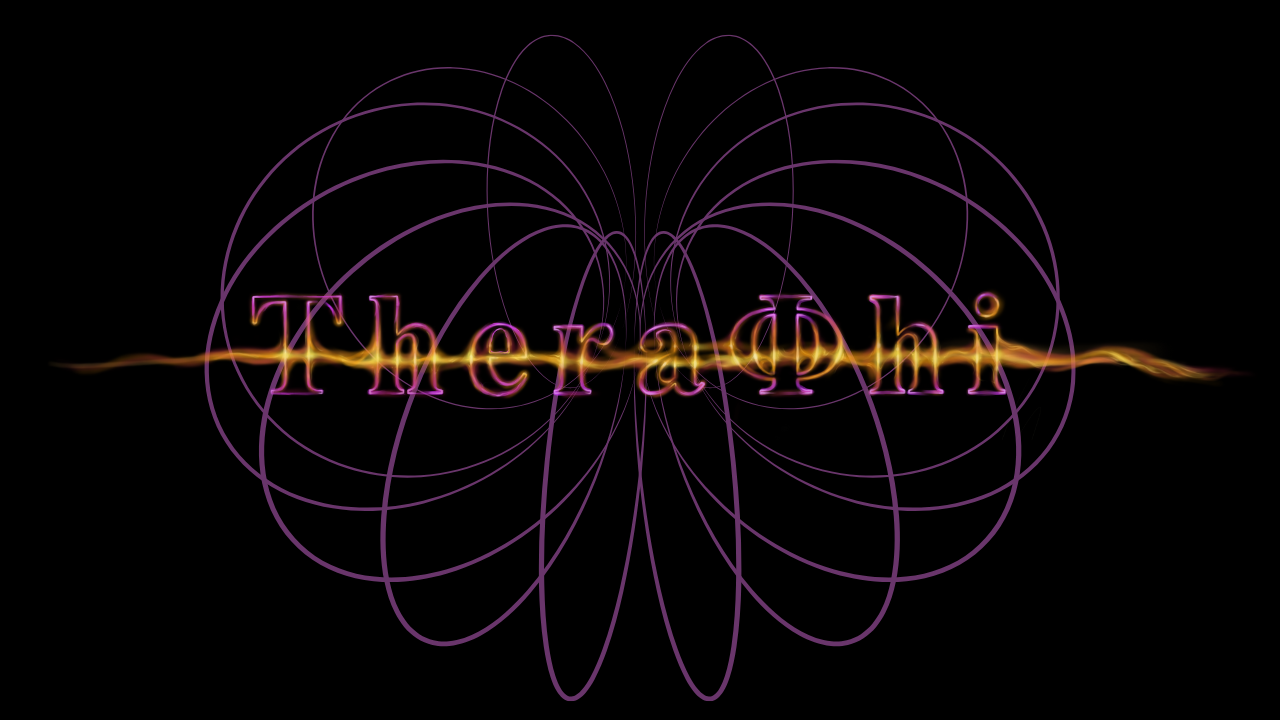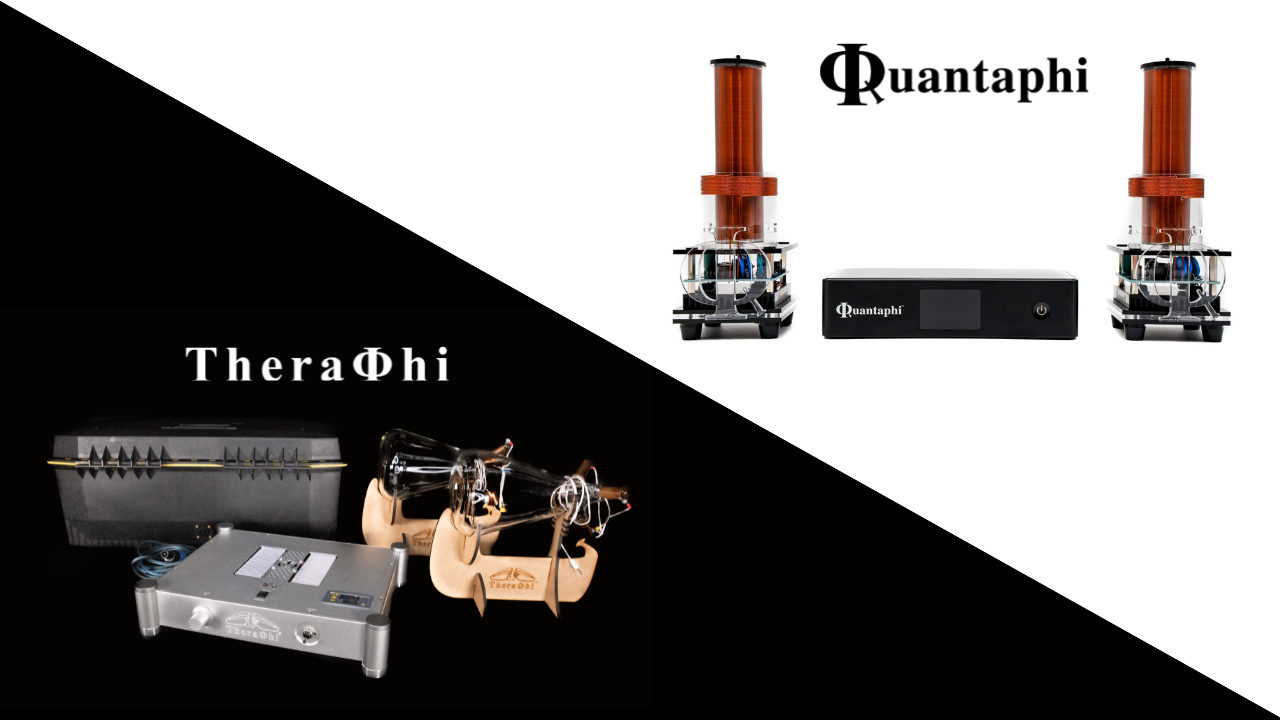ATP Increases by 24% With Theraphi Use
Written by Brandon Amalani

Did you know that there's a microscopic powerhouse that fuels every heartbeat, breath, and thought? This molecule is adenosine triphospate, or ATP. Known as "the energy currency of life", ATP provides the energy that drives nearly all biological processes within the smallest bacteria to the largest mammal. It is a universal feature of life, and without it, life would cease to exist.
In every cell of the body, countless ATP molecules are constantly working and recycling. Each molecule is regenerated hundreds or thousands of times a day in a remarkably efficient process. Cells either synthesize ATP from basic chemical components or recycle it from spent molecules within the mitochondria - nature's very own power plants - ensuring that a continuous supply of energy is always available for immediate use.
What exactly is ATP, how is it made, and why is the mitochondria so critical for its production? Let's dive deeper into the fascinating world of cellular energy and uncover the secrets of this life-sustaining molecule.
What is ATP, and the nature of its relationship with DNA and mitochondria?
ATP is one of many nucleotides. A nucleotide is an organic molecule that serves as a building block for DNA and RNA, the nucleic acids that store genetic information in cells.
As is commonly known, DNA consists of two linked strands in the shape of a twisted ladder known as a double-helix. Each strand has a backbone that alternates between a type of sugar called deoxyribose, and a phosphate group. Attached to each molecule of deoxyribose is one of the four nucleotides: adenine (A), thymine (T), guanine (G) and cytosine (C). These bases are the components that continually link the two DNA strands together, and they are always paired in the same way: adenine with thymine, and guanine with cytosine. ATP is based on a molecule of adenine, so is an indispensable part of the structure of DNA.
Every cell contains DNA, the exact blueprints for how to build every single component that makes up a living organism. The blueprint is contained in sections of the DNA called chromosomes, and each chromosome is made up of hundreds to thousands of smaller portions called genes, or gene sequences.
There's another molecule called ribonucleic acid (RNA) which acts as a transcription molecule to transfer the code found in the DNA to new cells, ensuring that they are created using the exact genetic information embedded in the DNA. It acts as an intermediary between DNA and the synthesis of new cell components, carrying the informational template from the DNA outside of the cell nucleus to create new cells or repair damaged cells.
ATP is structurally related to RNA nucleotides, and is a required component of DNA replication, as it provides the energy necessary to fuel the process.
The structure of ATP consists of an adenine molecule linked to ribose, a 5-carbon sugar. The combination of the two produces adenosine as the basic structure of ATP, upon which phosphate groups are then added sequentially through enzymatic processes. It begins as adenosine monophosphate (AMP), with just one phosphate group. Enzymatic reactions continue to add phosphate groups, until a total of three make up adenosine triphosphate (ATP).
The link between the final two phosphate groups (the "tail" of the ATP molecule) is the key to the energy production properties of ATP.
Every time an ATP molecule is used, it loses the end of its phosphate tail, releasing the energy from it to fuel cellular processes. At that point, it's left with only two phosphate groups, becoming adenosine diphosphate (ADP). In this form, it can be regenerated back to ATP quite efficiently within the mitochondria. Then, it can be used once more to produce energy for cellular processes.
Three ways in which the cells generate ATP
The primary function of the mitochondria is to produce and regenerate large quantities of ATP. Mitochondria are found in the cytoplasm of the cell, which is the liquid portion between the outer cell membrane and the nucleus, or core, of the cell.
Inside each mitochondria is where the main energy-generating system of the cells occurs: first through the citric acid (Krebs) cycle, a metabolic pathway that transforms nutrients into electron-carrying molecules, which then enter the electron transport chain (ETC). The ETC performs a series of redox (reduction-oxidation) reactions, basically transferring electrons between molecules to regenerate ADP back into ATP. The process of electron transport between molecules through the ETC, and the subsequent step of chemiosmosis (utilizing the excess photons to restore ADP into ATP), is referred to as oxidative phosphorylation. It is extremely efficient, and produces a whopping 36-38 molecules of ATP per glucose molecule.
The method described above is the primary way that the body produces ATP, as it is highly efficient and "clean burning". There are other ways that the body produces ATP that bypass the mitochondria, but they are much less efficient and productive than oxidative phosphorylation in the mitochondria.
One type is called aerobic glycolysis, which can produce ATP more quickly in a kind of "emergency mode" when the organism is under significant stress. This method bypasses the mitochondria, and occurs instead in the cytoplasm of the cell. It is used "in a pinch" if the cell needs energy as quickly as possible, and still has access to oxygen, but aerobic glycolysis generates only 2 molecules of ATP per glucose molecule, which is very inefficient and resource intensive. The body needs to consume 15 times more glucose to generate the same amount of ATP (compared with the main method in the mitochondria), so this mechanism is effective in response to short term stress like intense exercise, but is not sustainable for long term energy production.
ATP can also be produced by anaerobic glycolysis, where glucose cannot fuel the Krebs cycle due to a lack of available oxygen. This also happens outside the mitochondria, in the cytoplasm. An example is during anaerobic exercise where a muscle cell cannot access enough oxygen to produce the energy needed to meet the demands being placed upon it. In these instances, ATP must be produced somehow, so a backup method available to the body is to ferment the glucose into lactic acid, which produces a small amount of ATP (only 2 ATP per glucose molecule). This creates the "burn" you feel in your muscles during and after an intense workout.
There are benefits to forcing the body to produce energy anaerobically for short periods of time, especially through intense exercise. This kind of training can improve muscular strength, power and endurance, and with practice, the body can adapt to become more efficient at buffering lactic acid and utilizing anaerobic pathways to produce ATP. However, this should not ever be the primary method of producing ATP in the cells of parts of the body with high energy needs, as it can lead to metabolic acidosis, dangerously lowering the pH of the blood. It also uses too much glucose and glycogen to be sustainable, resulting in exhaustion, muscle damage, and excess oxidative stress. This can accelerate aging, strain the organs and result in chronic inflammation.
Higher energy cells, like neurons and muscle cells, contain a higher concentration of mitochondria and ATP, and are designed to run sustainably through oxidative phosphorylation, only occasionally relying on the other backup "emergency" methods. Some other cell types, like red blood cells, lack mitochondria, so they regenerate smaller numbers of ATP through the simpler method of anaerobic glycolysis, since the energy needs of these cell types are lower.
What are the benefits of ATP, and the dangers of not having enough?
Some of the vital cellular functions powered by ATP are muscle contractions, nerve impulses, delivering nutrients into cells, removing waste products from cells, protein synthesis, and DNA replication.
As the cell's "energy currency", ATP is like a rechargeable battery with a constantly fluctuating state of charge. In the form of ATP, the battery is at full charge, ready to be used to power the processes of life. As the energy is used and becomes depleted (by losing its end phosphate bond), it becomes ADP, and is then in "low power mode" until it is recharged back to ATP. The "battery" that is ATP can be continually depleted and recharged, as long as nutrients and oxygen are consistently available to fuel the process.
The amount of ATP that the body is able to continually and quickly produce and recharge is closely linked to that organism's state of health. Healthy cells and mitochondria that can rapidly produce ATP will help the organism thrive in every way. Low energy availability from inefficient ATP production will eventually reduce in the overall vitality of the organism, which could potentially result in states of chronic illness.
Optimal and efficient ATP production is required for cellular processes such as protein synthesis, cell division and DNA replication. Energy-intensive organs like the brain, heart and muscles are especially reliant on a constant supply of ATP for their health and function. Reduced ATP production leads to a lack of energy, causing chronic fatigue, as cells and tissues are unable to function optimally without enough ATP.
ATP is necessary to regulate all metabolic processes of the body, including the breakdown of nutrients into usable energy and the removal of metabolic waste products. It also supports the body's ability to burn fat for energy, maintain lean muscle mass and regulate hormones, supporting a healthy weight and body composition. A lack of ATP can result in nutrient depletion, a buildup of toxins inside the cell, as well as hormone and metabolism imbalances that can result in excess body fat and a lack of healthy muscle.
Muscle contraction is directly fueled by ATP, and adequate ATP production allows for sustained performance and faster recovery from physical exertion. It is vital for recovery after exercise, reducing injury risk and promoting muscle growth. Too little ATP can cause muscles to weaken and atrophy, and prolong recovery from exercise or injury, negatively affecting strength and mobility.
ATP functions as a neurotransmitter, so is essential for all processes of the brain and cognition, including maintaining concentration and mental clarity, memory and problem-solving. Reduced ATP can result in brain fog, poor concentration and eventually cognitive decline, and can lead to neurodegenerative diseases such as Alzheimer's, Parkinson's and other forms of dementia.
The critical role the immune system plays in defending the body from invaders is dependent on ATP, as well. ATP fuels the production of immune cells, and gives them the energy they need to respond quickly and efficiently to viral and bacterial infections. It's also needed to repair tissue damage and reduce inflammation in the recovery phase after an infection has been cleared.
Longevity and anti-aging are closely tied to the body's ability to produce and utilize ATP. It is essential for cell repair, including repairing damage to the DNA, minimizing the risk of cancer and other diseases that are linked to malformed cells. ATP is mostly produced within the mitochondria, yet the mitochondria themselves require a steady supply of ATP to keep their own structures functioning optimally. Healthy mitochondria support healthy aging and lower levels of oxidative stress.
Can Theraphi help the body produce more ATP?
In the decade since the Theraphi plasma healing device has been on the market, it has been nicknamed "the human battery charger". This is a great metaphor for how one feels after a Theraphi session, but it also may be very close to the truth scientifically!
In a recent study conducted by Dr. Glen Rein, the effects of Theraphi on the structure of water, DNA and human cells was done using impedance spectroscopy. One of the astonishing findings was that ATP production was increased by 24% in human cells, even after just a few treatments. This same study also found a considerable increase in the electrical conductivity of water, which has intriguing implications since the human body contains more water by weight than any other substance.
Our hypothesis is that the Theraphi's uniquely structured plasma energy stimulates cellular metabolism and energy production. As a "human battery charger", the Theraphi may actually be "charging", or energizing the mitochondria, in turn allowing for the more efficient form of ATP production to occur more quickly. This would alleviate the glycolysis forms of ATP production, thus eliminating the inflammation and acidosis that occurs from these less efficient processes of energy generation.
The precise biochemical pathways stimulated by these energetic interactions remain unclear, and are a subject to be explored in future studies.
The full results from this study will be available this spring, so stay tuned!
References:
- Britannica: "adenosine triphosphate" - https://www.britannica.com/science/adenosine-triphosphate
- Very Well Health: "What is ATP?" - https://www.verywellhealth.com/atp-6374347










Leave a comment